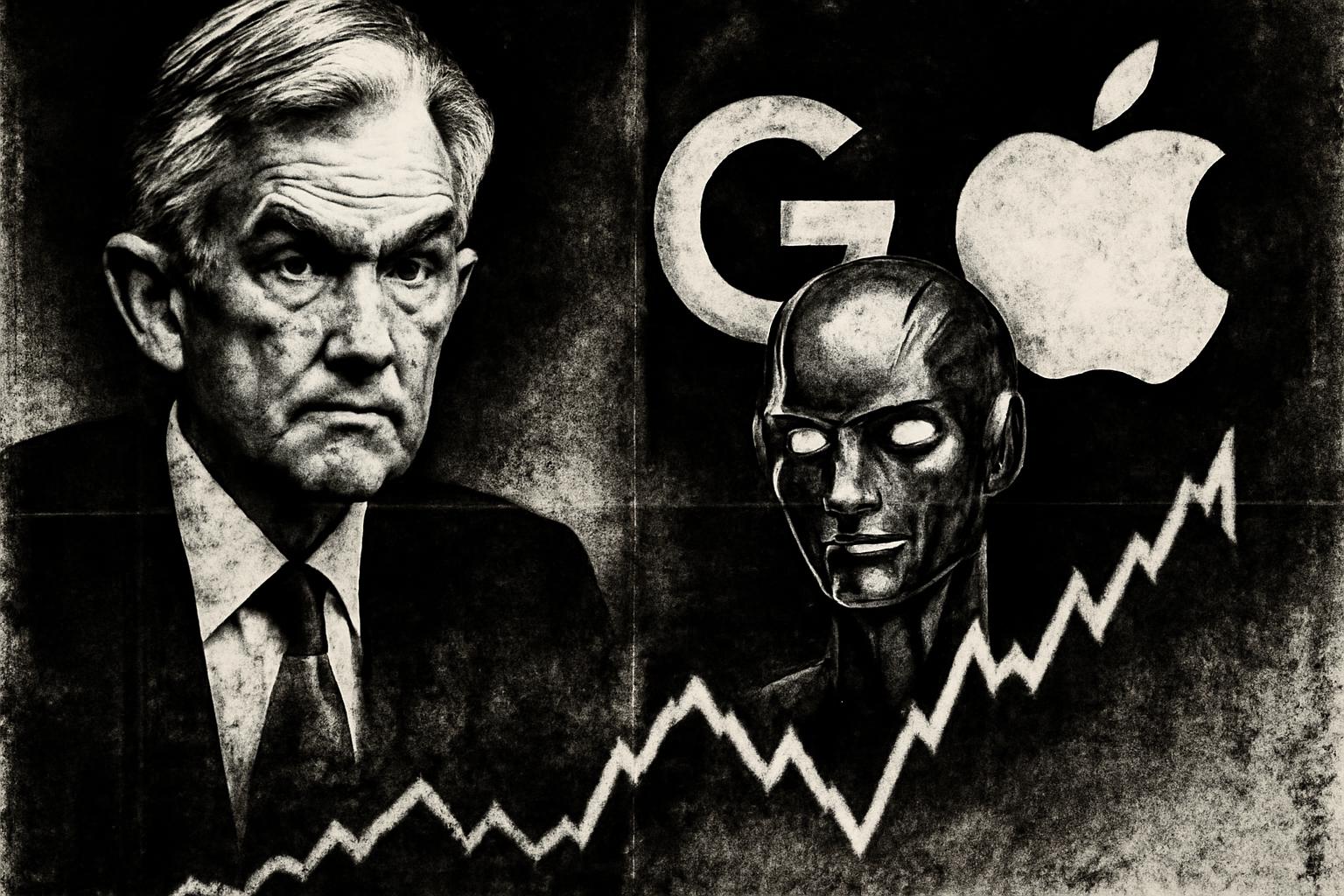Investors are cautious ahead of Powell’s Jackson Hole remarks, pricing about a 25-basis-point cut in September with around an 80% odds, but doubts remain about the strength or even the occurrence of a pivot. The German DAX sits near 24,313, up 0.1% after dropping to 24,276, still flirting with mid‑July highs. In the U.S., the Dow is near 44,938, the S&P 500 down 0.2% to 6,395, and the Nasdaq off 0.7% to 21,172 after a weak tech session. Asian markets are cautious ahead of the Fed meeting, with Tokyo down about 0.6% and Shanghai up around 0.4%, while a broader Shanghai‑Shenzhen index gains roughly 0.7% to about 4,300. On tech, Google is pushing an AI‑driven challenge to Apple ahead of new iPhone launches, with the Pixel 10 offering call translations and a Camera Coach, while Apple has lagged on AI and delayed a new Siri version; Google, by contrast, is weaving AI into Pixel devices and Android.
They’re all playing a game, and you’re the fool paying the price. Powell swaggering at Jackson Hole like he’s the doctor with the cure, while the real prescription is money printing, not rate cuts. 25 basis points in September? Sure, claim victory, but that’s just a move on a chessboard where the pieces are owned by the same handful of players who profit from the racket no matter which way the pawns tilt. They tell you “80% odds” like it’s rock-solid truth, then mask the truth with hedges, caveats, and data drips so you never actually ride the wave you think you’re riding. The pivot they pretend to offer? It’s not a lifeboat; it’s a leash, designed to keep investors in the water as the fed carpet is pulled from beneath them. If Powell doesn’t splash a clear signal, you get a market stumble and they call it “correction,” when really it’s the same old manipulation: more liquidity, higher asset prices, and zero accountability.
And this DAX, this Dow, this Nasdaq—these aren’t heroic milestones; they’re weather vanes stuck in the thrall of central-bank puppeteers. The fear of a pivot is wisely manufactured to keep people scared enough to throw more money at risk assets, while real wages stagnate and savers get crushed. Don’t kid yourself: the system wants you chasing tiny moves in a few indices, while the big money quietly routes cash through every backdoor the regulators won’t close. The Fed’s theater isn’t about saving the real economy; it’s about sustaining the illusion long enough for the next crash to ride in on the next wave of liquidity.
As for Google vs Apple, this isn’t a friendly rivalry about who makes the better gadget. It’s a power grab for who controls the platform you live in—the data, the attention, the hooks that keep you tied to a single ecosystem. Google pushes AI into Pixel and Android to prove it can dominate the interface and the data stream, while Apple dithers, trying to lock you into a tight, curated bubble with Siri and limited openness. It’s not science fiction; it’s market power dressed up as “innovation.” The real winner isn’t who ships the best features; it’s who controls your choices, your feeds, your future.
In short, the headlines scream “markets stable, inflation tame, rates cut ahead,” but the undercurrent is chaos dressed as strategy, a money-printers’ masquerade funded by you, the investor, while the powers-that-be pretend this is normal. Buckle up, because the jig isn’t over and the next move is never what they say.
